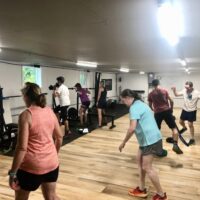We currently find ourselves in a strange place…usually there are several “end-of-season” races to look forward to at the end of March, from the Spring Fling and the NE Club Relay Championship to the Junior events like Eastern HS Champs.
However, the Coronavirus has put a halt to pretty much all of that. While this abrupt end may get you down, it’s important to think about how to close out the season and prep for the coming one!
1) Reflect on the past season. Right now is when things are most fresh. What went well, and how will you keep that going? What do you need to work on, and how can you plan and execute the right changes going into 20/21?
2) Ski as much as you can even if it’s not perfect. With the end of March being the “true” end of season (most MNC training logs start with April 1 being the first week of the “new” year) you should be trying to ski as late as possible…stretch the shoulder-season out and it’ll mean less wait between snow skiing and rollerskiing…that means your technique gains and snow-feel will translate even more to the wheels. Just like we seek out early snow at Thanksgiving and even times before that week, you want to seek out late snow whenever possible.
3) Introduce running CAREFULLY especially if you are racing a season of track at school. For many, it has been quite some time since the last real running workout or intensity, let alone easy distance. It can’t be overstated how slow and progressive running needs to be in order to prevent injury. Start with 1-2 miles or 20-30 minutes at a time. This seems so small for some of us…but it’s what is needed. Increase by 5-10 minutes each time, and start by running every other day, not every day. Don’t start doing intensity or intervals until 2+ weeks of running.
Many years, Nordic athletes have almost zero break between the final races of the ski season and the first track practices of the year which inevitably seem to just involve hammering out intervals and repeats. Since we are ending the ski racing early, it means a more natural and healthy amount of time to rest and then build up into running shape.
4) Don’t hold back on strength since now there aren’t any races to taper or peak for. Strength is one of the first elements of training to “detrain”. More bluntly put: if you don’t do any physical activity, it is your strength that will be first to diminish (next is your high-end speed and race-type aerobic capacity, followed at the very end by your base fitness and “level 1” training ability). Great exercises to focus on in the spring are lower-body and stability exercises, which will help prevent injuries from running. Don’t forget your band/hip exercises!

Hot days of running and bounding will be here before we know it!




Comments are closed.